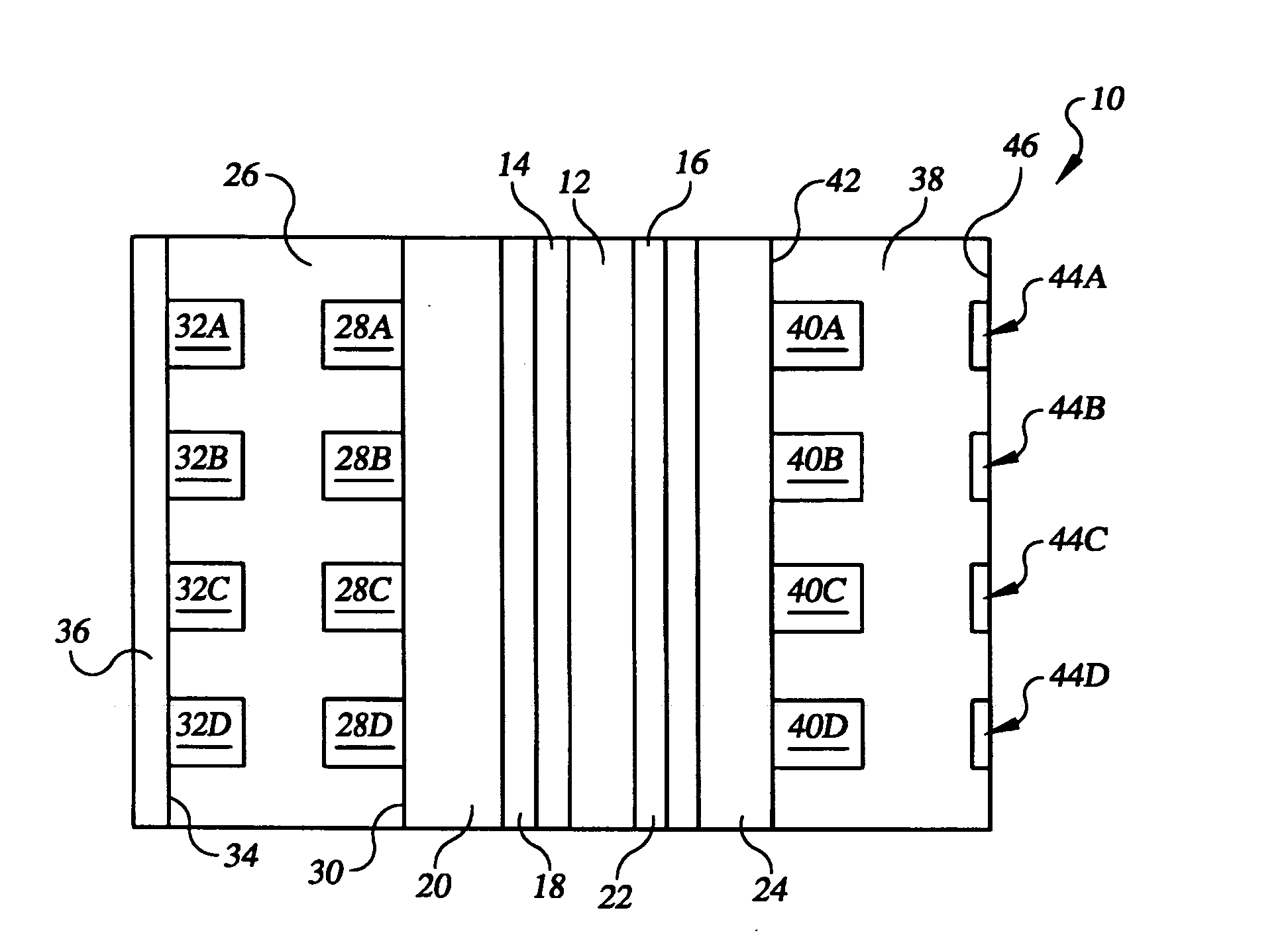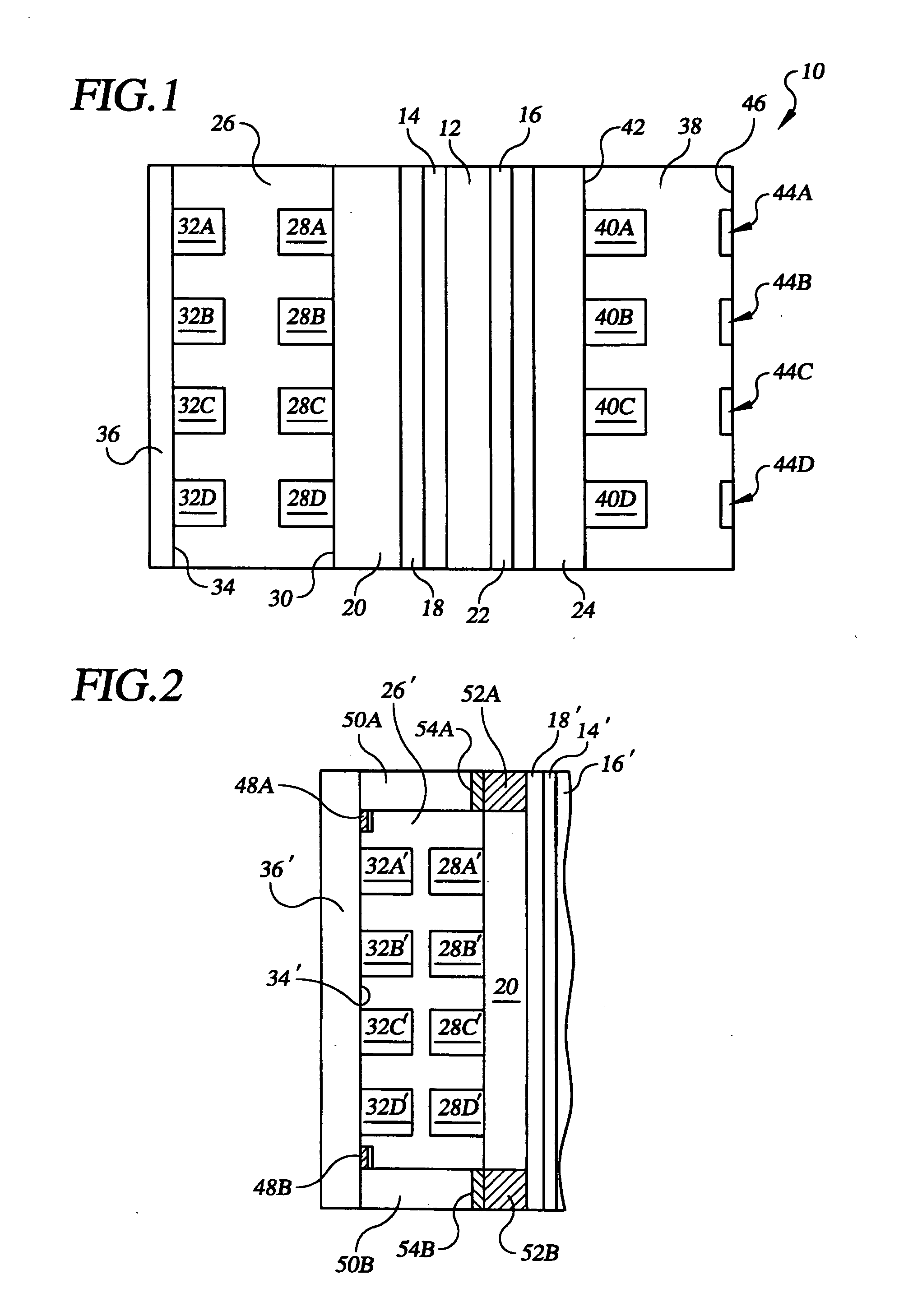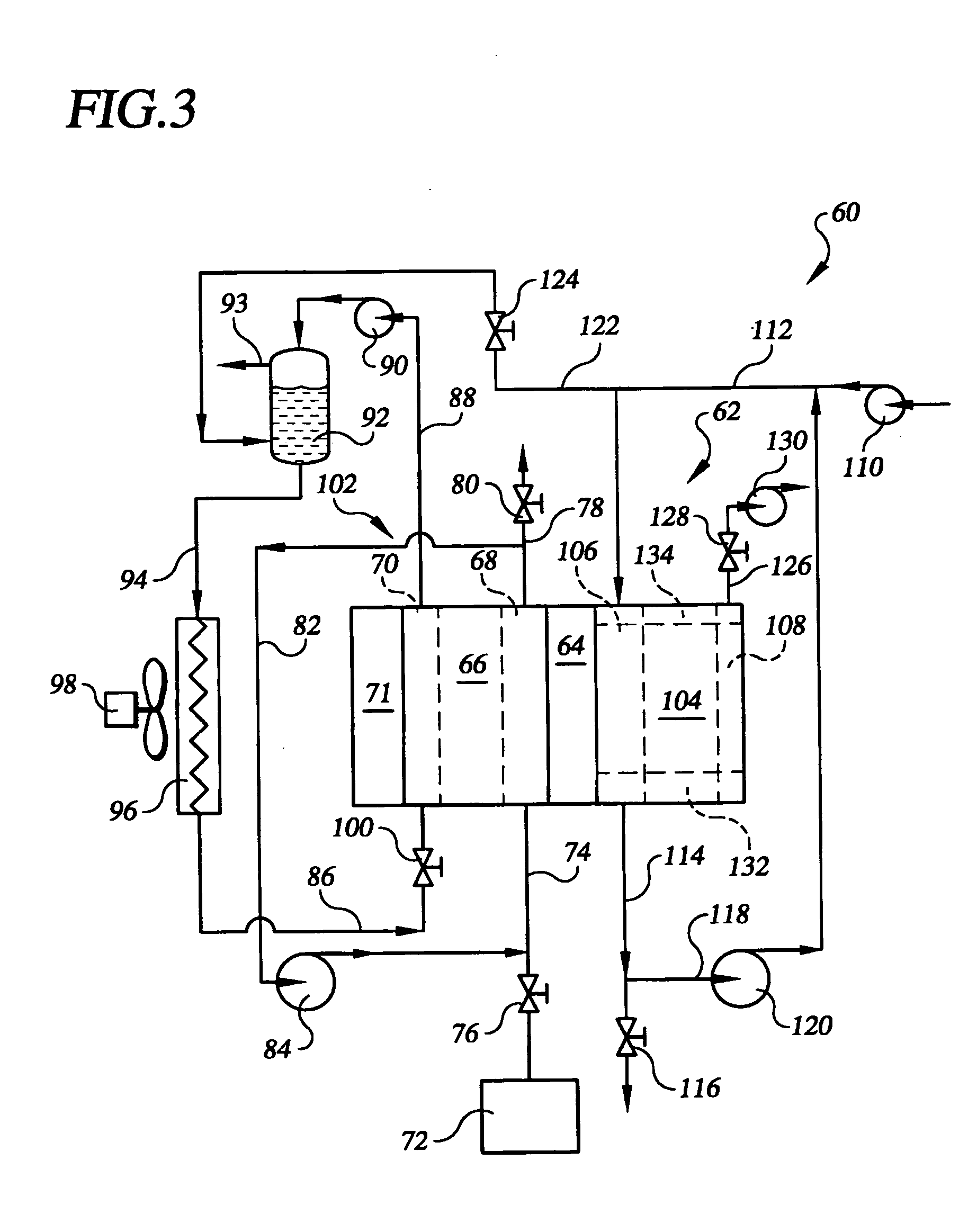Direct antifreeze cooled fuel cell power plant with passive water management
- Summary
- Abstract
- Description
- Claims
- Application Information
AI Technical Summary
Benefits of technology
Problems solved by technology
Method used
Image
Examples
Embodiment Construction
[0021] Referring to the drawings in detail, a fuel cell 10 is shown in FIG. 1 that is constructed in accordance with the present invention. The fuel cell 10 includes an electrolyte 12, such as a proton exchange membrane (“PEM”) secured between an anode catalyst 14 and a cathode catalyst 16 in a manner well known in the art. A porous anode diffusion layer 18 is secured adjacent the anode catalyst 14 and a porous anode substrate 20 is secured adjacent the diffusion layer 18. In the preferred embodiment shown in FIG. 1, both the anode diffusion and substrate layers 18, 20 are utilized, and they typically consist of a carbon black-hydrophobic polymer and porous carbon-carbon fibrous composite layers well known in the art as described in the aforesaid patents. However, in alternative embodiments, the anode catalyst 14 may be supported by only one of the two layers 18, 20. Additionally, at least one of the anode diffusion layer 18, the anode substrate layer 20 or both layers may be wetpro...
PUM
| Property | Measurement | Unit |
|---|---|---|
| concentration | aaaaa | aaaaa |
| pressure | aaaaa | aaaaa |
| pressure | aaaaa | aaaaa |
Abstract
Description
Claims
Application Information
 Login to View More
Login to View More - R&D
- Intellectual Property
- Life Sciences
- Materials
- Tech Scout
- Unparalleled Data Quality
- Higher Quality Content
- 60% Fewer Hallucinations
Browse by: Latest US Patents, China's latest patents, Technical Efficacy Thesaurus, Application Domain, Technology Topic, Popular Technical Reports.
© 2025 PatSnap. All rights reserved.Legal|Privacy policy|Modern Slavery Act Transparency Statement|Sitemap|About US| Contact US: help@patsnap.com



